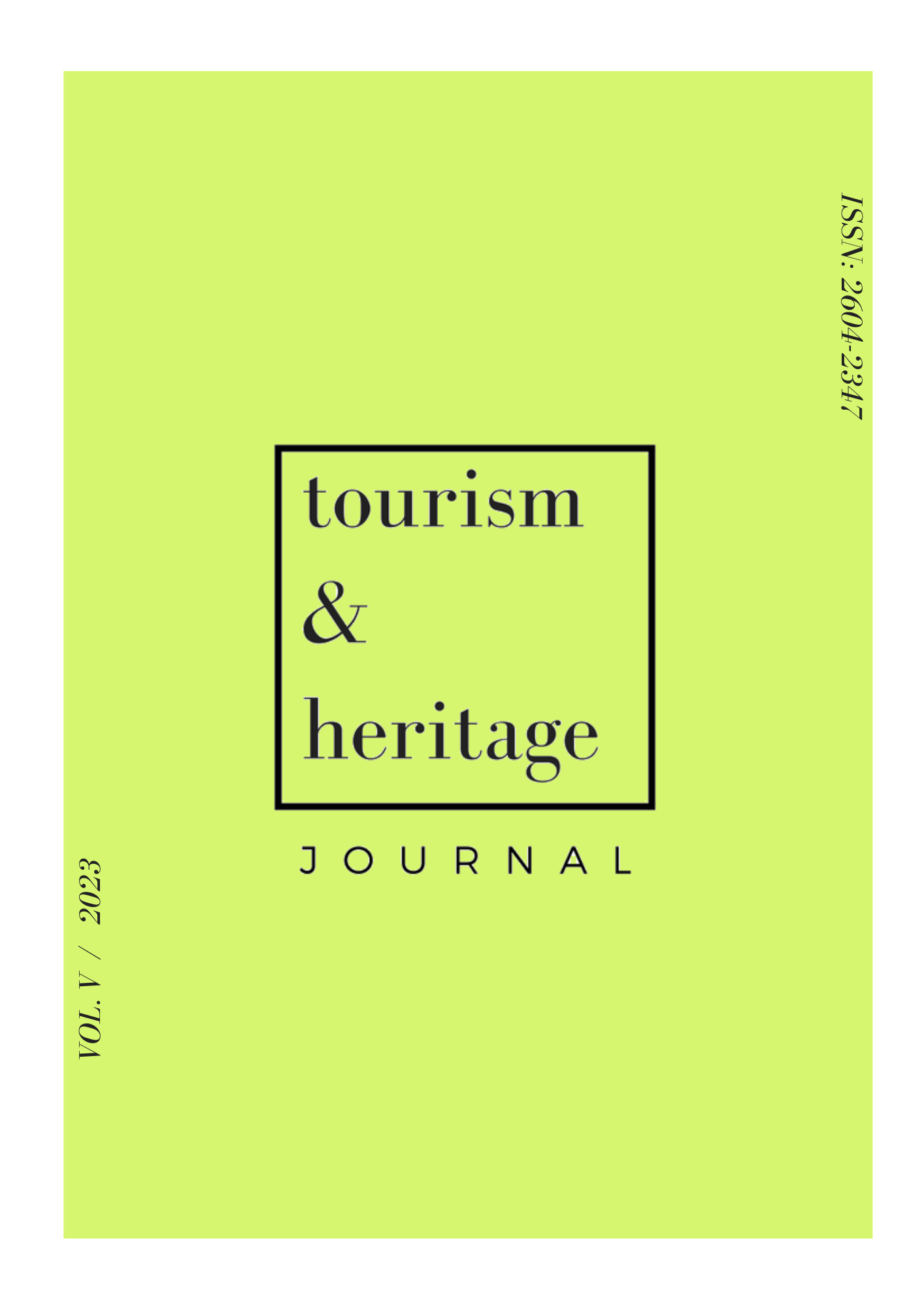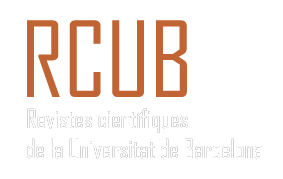From the garden to the grave – three dark sites related to the legend of Pedro and Inês
DOI:
https://doi.org/10.1344/THJ.2023.5.1Keywords:
dark tourism, dark literary tourism, legend of Pedro and Inês, literary tourismAbstract
By combining an interpretive reading of the spaces, a study of DMOs marketing strategies and TripAdvisor ratings, this research aims to understand the role of literary constructions, symbols, and discourses in the development, positioning, and management of a dark literary site. Three specific places will be highlighted in relation to the biography of the legend of King Pedro I and Inês de Castro, the "skeleton queen", assessing how these heritage sites exploit the legend for place branding, attracting visitors and creating a strong identity. In addition, this article aims to evaluate how and to what extent three heritage sites—Santa Clara a Velha's Church, Quinta da Lágrimas in Coimbra, and Alcobaça Monastery—associate themselves with the legend of Pedro and Inês, in order to increase their attractiveness, concluding that all the literary resonances of these locations can be traced to Luís Vaz de Camões’ The Lusiads. As for the dark elements, while Quinta das Lágrimas and Alcobaça Monastery combine literary with a macabre appeal, notably Alcobaça, the darkest of the three, Santa a Clara a Velha's Church is primarily of a biographic nature. Additionally, the macabre use of the space in this case appears to overpower the literary associations.
References
Almeida, L. S. et al. (2021) A imaginação na constituição do mito dos amores de D. Pedro e D. Inês de Castro. In Castro, P. (ed.) e-book VII CONEDU (Conedu em Casa) - Vol. 02. Realize Editora, pp. 250-268. Available at: https://editorarealize.com.br/artigo/visualizar/74244.
Antunes, J.F.D. (2013). Mosteiro de Santa Maria de Alcobaça. Análise das intervenções efectuadas nos últimos 50 anos, diagnóstico das anomalias actuais e proposta de intervenção futura [Master’s thesis, Istituto Superior de Egeharia de Lisboa]. https://repositorio.ipl.pt/bitstream/10400.21/5363/1/Disserta%C3%A7%C3%A3o.pdf
Busby, G., & Devereux, H. (2015). Dark tourism in context: The Diary of Anne Frank, European Journal of Tourism, Hospitality and Recreation, 6(1), 27-38.
Camões, L., & Fanshaw, R. (1655). The Lusiad. Or Portuguese Historicall Poem. Humphrey Mosely.
César, I. (2016). A perceção da qualidade dos serviços no Centro Interpretativo de Santa- Clara-a-Velha Mosteiro de Santa Clara-a-Velha pelos olhos e palavras dos seus visitantes [Master’s Thesis, Escola Superior de Educação – Instituto Politécnico de Coimbra].
CMC - Câmara Municipal de Coimbra (n.d.). Available at https://www.cm-coimbra.pt
Cristófano, S. (2012). O amor trágico entre D. Pedro e Inês de Castro: o diálogo entre a literatura portuguesa e a história do povo lusitano. Revista História & Perspectivas, 25(46). Available at https://seer.ufu.br/index.php/historiaperspectivas/article/view/19463
Côrte-Real, A. (2009). Mosteiro de Santa Clara de Coimbra: Do convento à ruína, da ruína à contemporaneidade. Ediliber.
DRCC - Direção Regional de Cultura do Centro (n.d.). Mosteiro de Santa Clara-a-Velha. Available at https://www.culturacentro.gov.pt/mosteiro-santa-clara-a-velha/
Fan, Y. (2006). Branding the nation: What is being branded?. Journal of vacation marketing, 12(1), 5-14. https://doi.org/10.1177/1356766706056633
Ferreira, B. (2021, October 26). De Coimbra a Alcobaça, Isabel Stilwell conta-nos a vida de Inês de Castro. Público. Available at https://www.publico.pt/2021/10/26/impar/noticia/coimbra-alcobaca-isabel-stilwell-contanos-vida-ines-castro-1981961
Fundação Inês de Castro (n.d.). Available at https://fundacaoinesdecastro.com/
Herbert, D. (2001). Literary places, tourism and the heritage experience. Annals of Tourism Research, 28(2), 312-333. https://doi.org/10.1016/S0160-7383(00)00048-7
Hoppen, A., Brown, L., & Fyall, A. (2014). Literary Tourism: Opportunities and challenges for the marketing and branding of destinations? Journal of Destination Marketing & Management, 3(1), 37-47. https://doi.org/10.1016/j.jdmm.2013.12.009
Kreischer, B. (2012). Fernão Lopes e Herberto Helder: Heranças mitificadas de Inês de Castro na Literatura Portuguesa. Medievalis, 1(2).
Leal, A. (2005, 18 Jan.). Dúvidas sobre inscrição em túmulo de D. Pedro. Público. Available at https://www.publico.pt/2005/01/18/jornal/duvidas-sobre-inscricao-em-tumulo-de-d-pedro-12
Lennon, J., & Foley, M. (2000). Dark Tourism. Continuum.
Light, D., Richards, S., & Ivanova, P. (2021). Exploring ‘gothic tourism’: A new form of urban tourism? International Journal of Tourism Cities, 7(1), 224-236. https://doi.org/10.1108/IJTC-01-2020-0012
Light, D. (2017). The undead and dark tourism: Dracula tourism in Romania. In G. Hooper, & J. Lennon (Eds), Dark Tourism: Practice and Interpretation (pp. 121-133). Routledge.
Machado de Sousa, M. L. (2018). Inês de Castro in English Literature. REAP - Revista de Estudos Anglo-portugueses, 27, 71-98.
Marques, L. (2019). The Making of the Literary City: Edinburgh, Barcelona and Óbidos. In I. Jenkins, & L.A. Lund (Eds.), Literary Tourism: theories, practice and case studies (pp. 57-72). CABI.
McEvoy, E. (2016). Gothic Tourism. Palgrave Gothic.
Mosteiro de Alcobaça (n.d.). Available at http://www.mosteiroalcobaca.gov.pt/pt/index.php?s=quemsomos.
Notícias de Coimbra (2022, 9 June). “Pedro, o Cru” proibido junto ao túmulo de D. Inês de Castro. Available at https://www.noticiasdecoimbra.pt/pedro-o-cru-proibido-junto-ao-tumulo-de-d-ines-de-castro/
ON Centro – Rede Digital da região Centro: Aveiro, Castelo Branco, Coimbra, Guarda, Leiria, Santarém e Viseu. (n.d.). Coimbra: Machado de Castro e Santa Clara-a-Velha dividem quase quatro milhões para conservação e reabilitação. Available at https://on-centro.pt/index.php/pt/patrimonio/item/7647-7634
Pine, B. J., & Gilmore, J. H. (2011). The Experience Economy: Updated Edition. Rev. ed. of The experience economy: work in theatre & every business a stage [1999]. Harvard Business Review Press. ISBN 978-1-4221-6197-5.
Quinteiro, S., & Baleiro, R. (2017). Estudos em literatura e turismo: Conceitos fundamentais. Faculdade de Letras da Universidade de Lisboa, Centro de Estudos Comparatistas.
Região de Leiria (2021, 28 Jan.). Mosteiro da Batalha perdeu 300 mil visitantes em 2020. Available at https://www.regiaodeleiria.pt/2021/01/mosteiro-da-batalha-perdeu-300-mil-visitantes-em-2020/
Resende de Oliveira, A. (2008). As vidas de D. Pedro e de D. Inês de Castro na historiografia medieval portuguesa. In M.R. Ferreira, A. S. Laranjinha, & J.C. Ribeiro Miranda (Eds.), Seminário Medieval (pp.113-125). Estratégias Criativas.
Sharpley, R., & Stone, P. (2009). The Darker Side of Travel: The Theory and Practice of Dark Tourism. Channel View Publications.
SIPA – Sistemas de Informação para o Património Arquitetónico. (n.d.). Mosteiro de Santa Clara-a-Velha – Portugal, Coimbra, Coimbra, União das freguesias de Santa Clara e Castelo Viegas. Available at http://www.monumentos.gov.pt/Site/APP_PagesUser/SIPA.aspx?id=2807
Squire, S.J. (1996). Literary tourism and sustainable tourism: Promoting ‘Anne of Green Gables’ in Prince Edward Island. Journal of Sustainable Tourism, 4(3), 119-134.
Strange, C. & Kempa, M. (2003). Shades of dark tourism: Alcatraz and Robben Island. Annals of Tourism Research, 30(2), 386–405. https://doi.org/10.1016/S0160-7383(02)00102-0
Tallone, L., Pascoal, S., & Furtado, M. (2021). Learning through Sites of Memory: Approaches to Cultural Tensions brought about by Dark Tourism. In A. Dragusin, & D.G. Dumbravescu (Eds), Un-bordering Disciplinarity. Trans-/Cross-/Post-Disciplinary Approaches to Linguistic and Literary Research - III-IV Conference Proceedings (pp. 203-224). Rediviva Edizioni/Smart Print Printing House.
Tallone, L. et al. (2022). The roles of museums in modern societies as a learning opportunity for higher education students. E-REI Revista de Estudos Interculturais, 10. Available at https://www.iscap.pt/cei/e-rei/pt/n10.html
Tulha, A. (2019, 25 April). Algarve: a história de um sucesso anunciado. Notícias Magazine. Available at https://www.noticiasmagazine.pt/2019/algarve-a-historia-de-um-sucesso-anunciado/historias/238217/
Tunbridge, J., & Ashworth, G. (1996). Dissonant Heritage: The Management of the Past as a Resource in Conflict. Belhaven Press.
Turismo do Centro (n.d.). Quinta das Lágrimas e o seu Jardim. Available at https://turismodocentro.pt/artigo/jardim-quinta-das-lagrimas/
Vieira da Silva, J. C. (1997). Os túmulos de D. Pedro e de D. Inês, em Alcobaça. Portugalia: Revista de Arqueologia do Departamento de Ciências e Técnicas do Património da FLUP, 18, 269-276. https://ojs.letras.up.pt/index.php/Port/article/view/4609
Xerri, D. (2018). Dark and Literary. A tour to the Isle of the Death. Journal of Language and Cultural Education, 6(2), 126-142. https://doi.org/10.2478/jolace-2018-0020
Downloads
Published
How to Cite
Issue
Section
License
Copyright (c) 2023 Sara Pascoal, Laura Tallone, Marco Furtado

This work is licensed under a Creative Commons Attribution 4.0 International License.
The authors who publish in this journal agree to the following terms:
- Authors retain copyright and grant the journal the right of first publication.
- Texts will be published under a Creative Commons Attribution License that allows others to share the work, provided they include an acknowledgement of the work’s authorship, its initial publication in this journal and the terms of the license.




